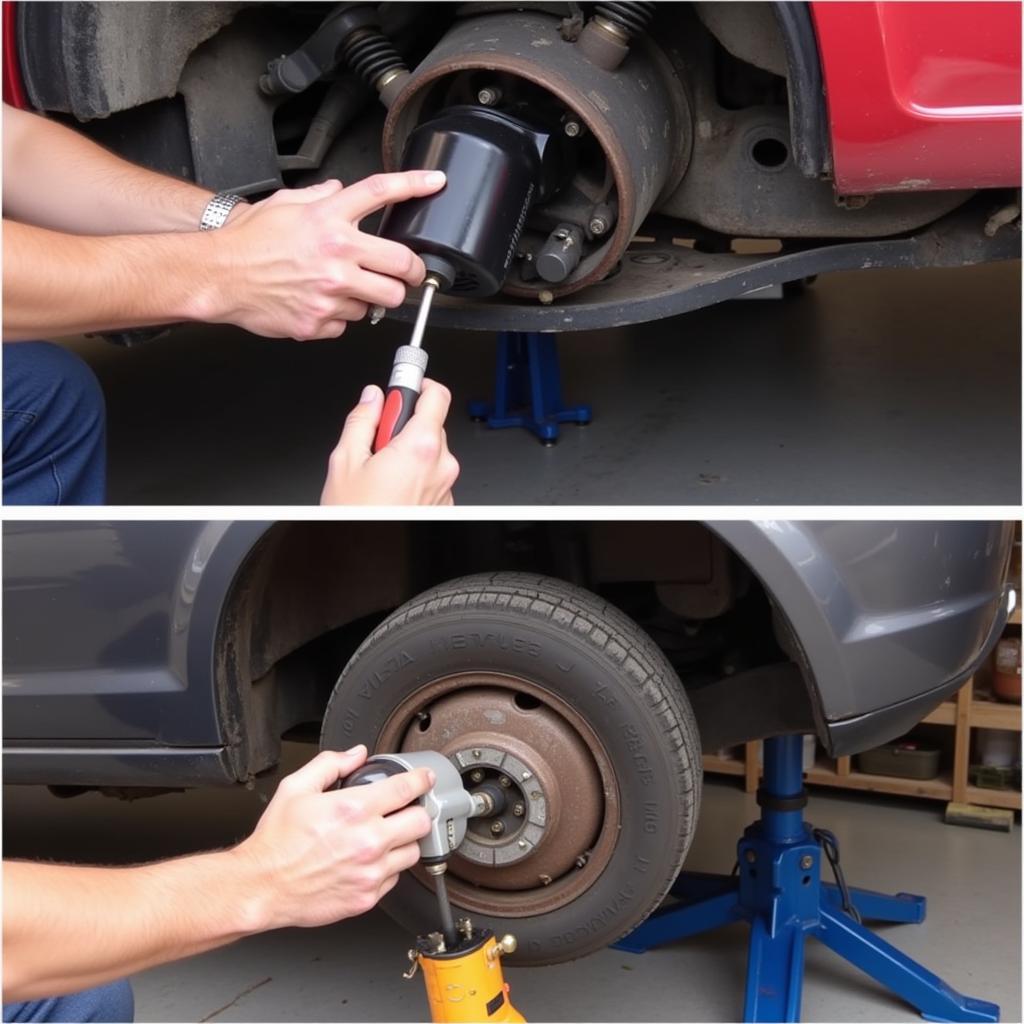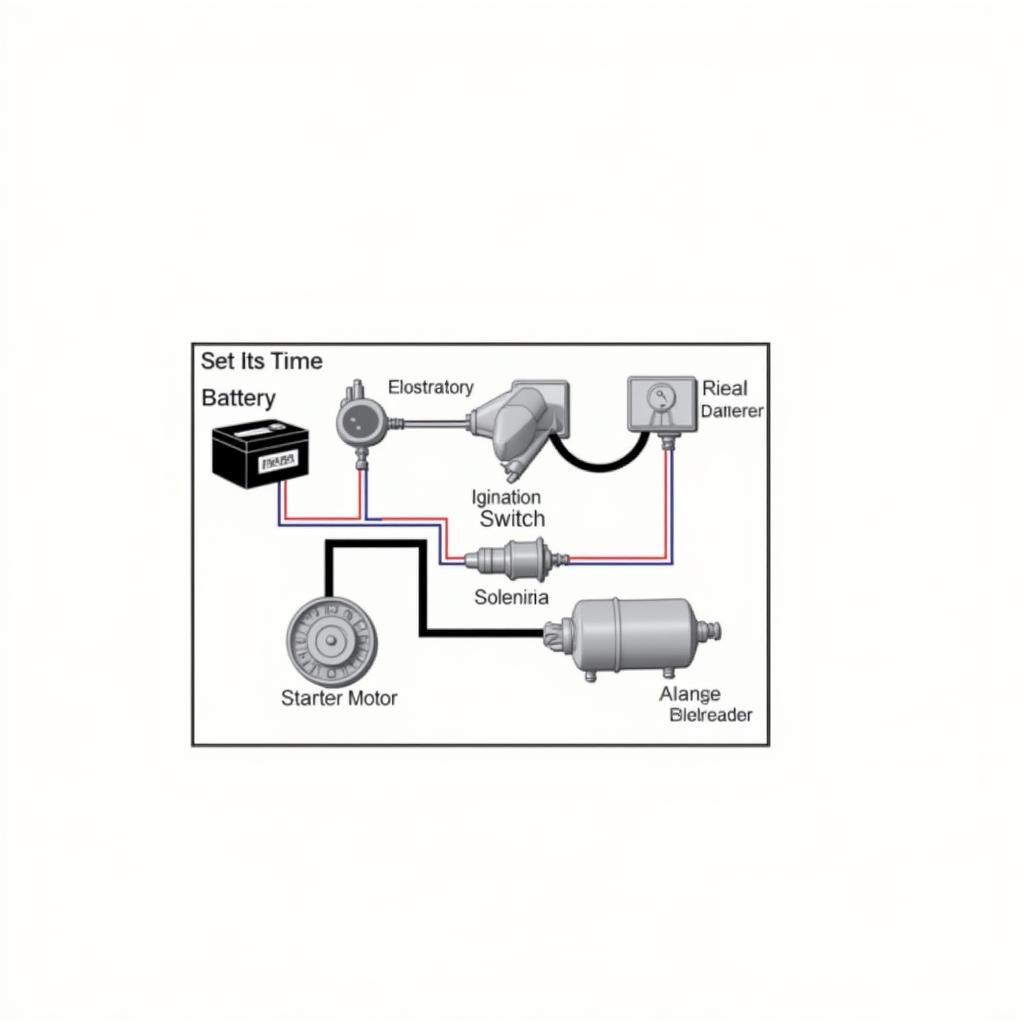Troubleshooting a faulty car starter can be a frustrating experience. Knowing How To Fix My Starter In My Car can save you time and money. This guide will walk you through the common causes of starter problems, diagnostic steps, and potential solutions, empowering you to tackle this issue head-on.
If your car isn’t starting, it might not be your starter at all. It could be a dead battery, a faulty ignition switch, or even a problem with your car’s security system. Knowing how to diagnose the problem correctly is the first step to fixing it. Learn more about fixing car engine issues here: fixing car engine.
Common Starter Problems and Their Causes
A clicking sound when you turn the key, a whirring noise from the starter, or complete silence can all indicate starter trouble. These issues can stem from a variety of causes:
- Dead Battery: A discharged battery is often the culprit. Test the battery voltage to rule this out.
- Loose or Corroded Connections: Check the battery terminals and starter connections for any signs of corrosion or loose wires.
- Faulty Solenoid: The solenoid is the electrical switch that engages the starter motor. A clicking sound often indicates a bad solenoid.
- Worn Starter Motor: Over time, the starter motor itself can wear out. This usually results in a grinding or whirring noise.
- Ignition Switch Problems: The ignition switch sends power to the starter. A faulty switch can prevent the starter from engaging.
 Checking Car Starter Connections
Checking Car Starter Connections
Diagnosing Your Car Starter
Here’s a step-by-step guide on how to pinpoint the problem:
- Check the Battery: Use a multimeter to check the battery voltage. It should read around 12.6 volts. A lower reading suggests a dead or weak battery.
- Inspect the Connections: Examine the battery terminals and starter connections for corrosion or looseness. Clean or tighten as needed.
- Test the Starter Solenoid: Use a jumper wire to bypass the ignition switch and send power directly to the solenoid. If the starter engages, the problem likely lies with the ignition switch or related wiring.
- Listen for Unusual Sounds: A clicking sound typically points to a bad solenoid. A grinding or whirring noise suggests a worn starter motor. Silence can indicate a dead battery, faulty wiring, or a completely failed starter.
If you need to replace your starter, consider the cost of the repair. Get an idea of how much various repairs cost: estimate to get car fixed.
How to Replace Your Car Starter
Replacing a starter can be a DIY project for those with some mechanical skills. However, it’s always best to consult a repair manual specific to your car model.
- Disconnect the Battery: Always disconnect the negative battery cable first for safety.
- Locate the Starter: The starter is typically mounted on the engine block or transmission.
- Remove the Connections: Disconnect the electrical connections and the mounting bolts holding the starter in place.
- Install the New Starter: Reverse the removal process to install the new starter.
- Reconnect the Battery: Reconnect the negative battery cable last.
 Replacing a Car Starter
Replacing a Car Starter
When to Seek Professional Help
While some starter issues can be resolved with simple fixes, more complex problems might require professional assistance. If you’re unsure about any step of the process or if the problem persists, it’s always best to consult a qualified mechanic. Sometimes, even seemingly simple repairs can become complex. For example, the cost to fix a water pump can vary widely: how much to fix car water pump.
Preventing Future Starter Problems
Regular maintenance can help prevent future starter issues:
- Keep Battery Connections Clean: Regularly clean the battery terminals and starter connections to prevent corrosion.
- Have Your Battery Tested: Periodically test your battery to ensure it’s holding a charge.
- Address Electrical Issues Promptly: Don’t ignore any electrical problems, as they can eventually affect the starter. If you’re experiencing issues with your remote car starter, troubleshooting it early can prevent further problems: how to fix my remote car starter.
 Clean Battery Terminals
Clean Battery Terminals
“A well-maintained battery and clean connections are crucial for a healthy starter,” says John Smith, ASE Certified Master Technician.
Conclusion
Knowing how to fix my starter in my car can save you both time and money. By following the steps outlined in this guide, you can diagnose and potentially fix the problem yourself. However, don’t hesitate to seek professional help when needed. For more information or assistance, feel free to contact AutoTipPro at +1 (641) 206-8880 or visit our office at 500 N St Mary’s St, San Antonio, TX 78205, United States. Sometimes a professional perspective is needed. You can learn more about fixing your car starter here: how to fix my car starter.
 Car Starter Diagram
Car Starter Diagram
“Remember, safety first! Always disconnect the battery before working on any electrical components in your car,” advises Jane Doe, Automotive Electrical Specialist.






Leave a Reply